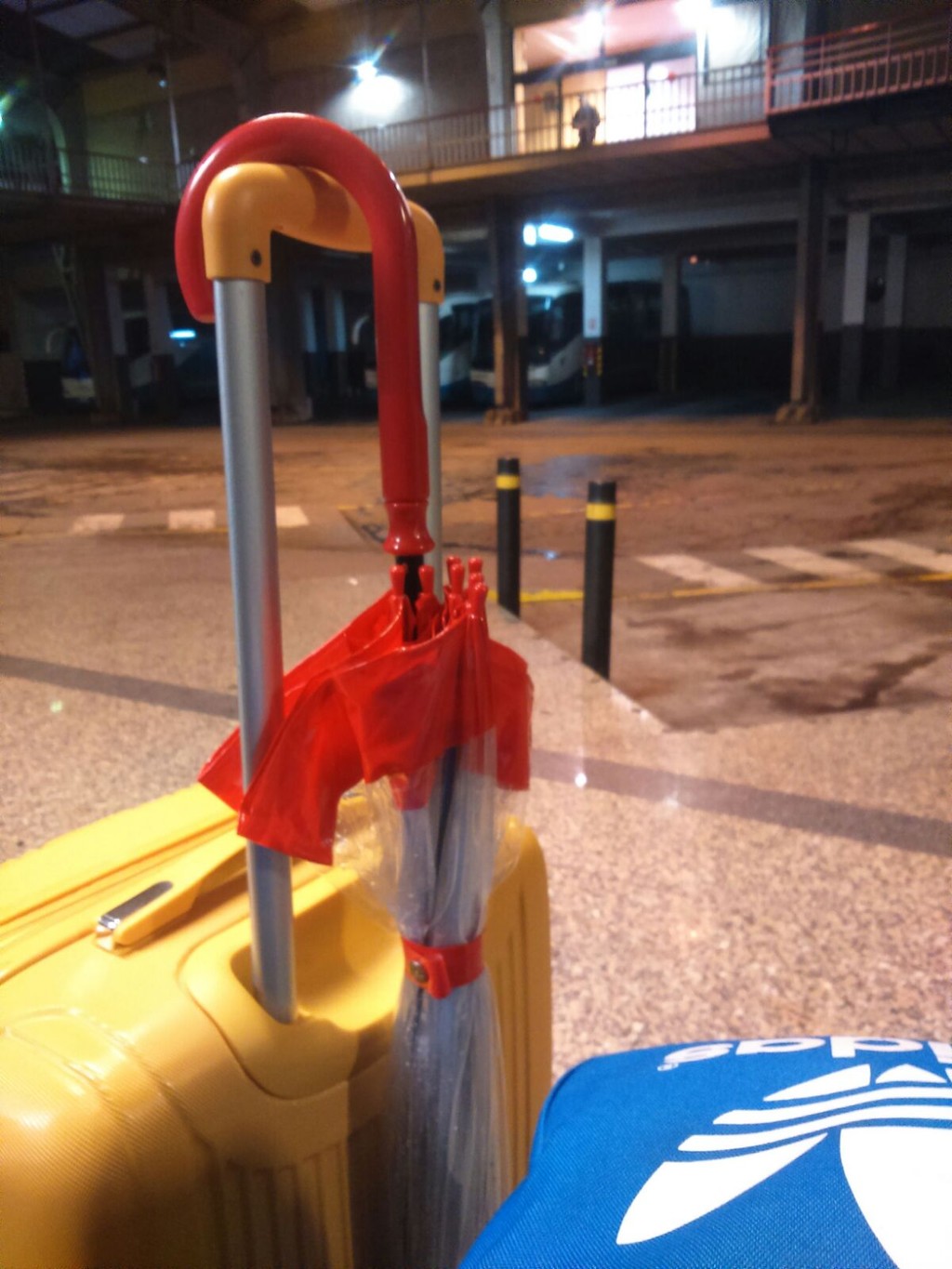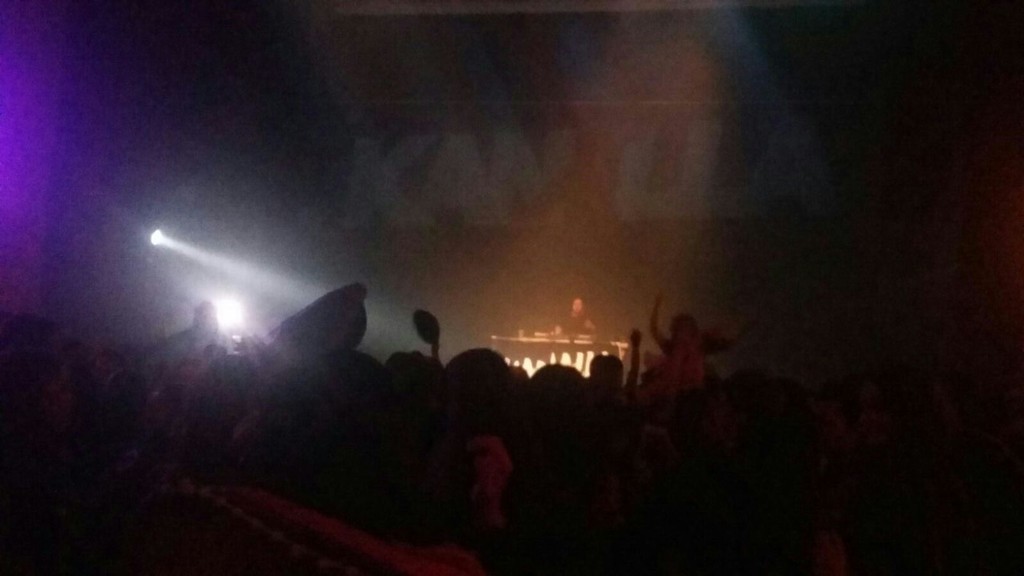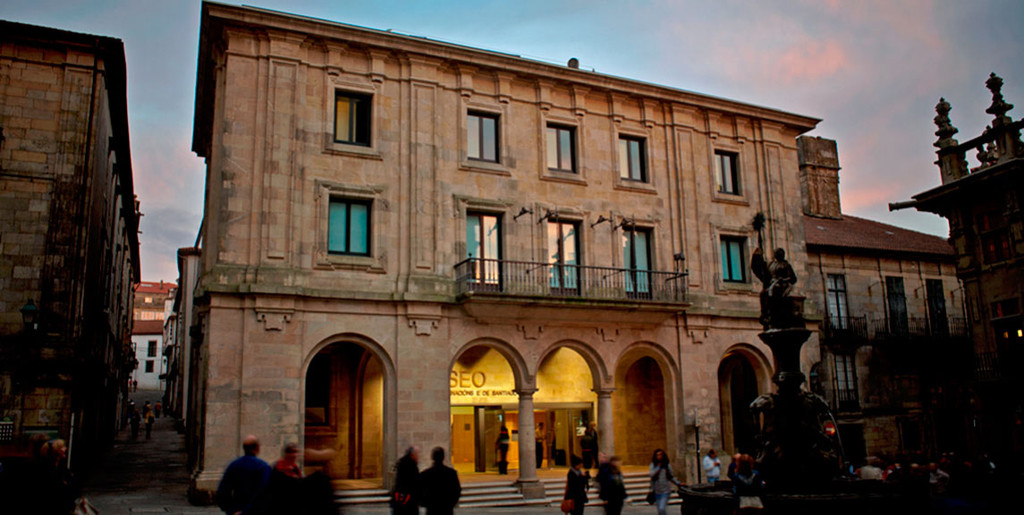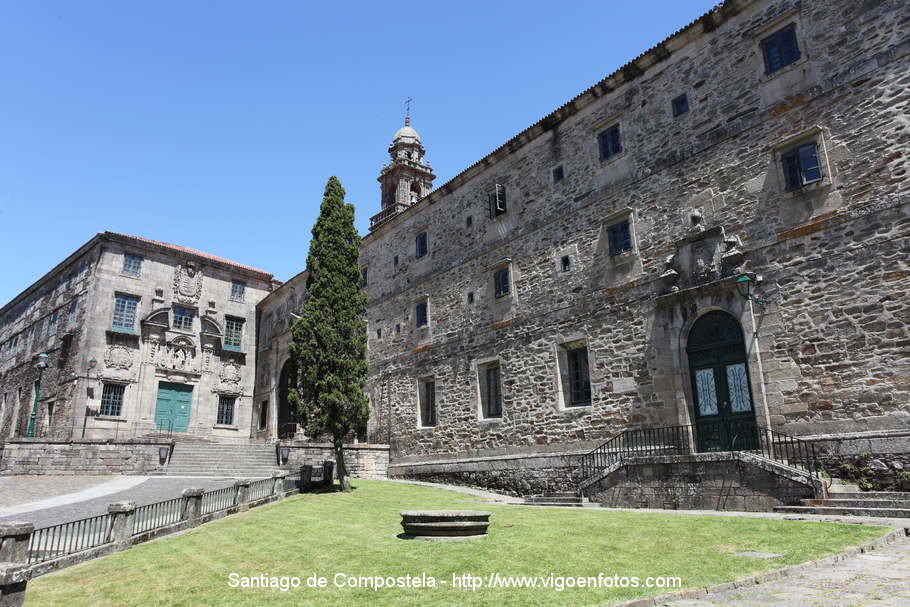Santiago: advice about the rain, uni life and... partying!
Hi again! Today I'm going to talk to you guys about the capital of Galicia: Santiago de Compostela. In this post I will touch on: the weather (with advice), the night scene, university life, and an average afternoon in Santiago. Let's get started!
Let's begin with the weather... it rains. It rains constantly. What a novelty. But the strange thing is, rather than rain vertically, it rains horizontally, so it is important to use an umbrella!
Some words of advice...
- Tip 1: Don't use a standard, everyday umbrella - this will turn inside out with the wind and will not protect you from the rain. Just this year, dome shape umbrellas have become fashionable, have you noticed? These are the best ones to use.
Once you have your umbrella, it's time to focus on your clothing...
- Tip 2: Boots. Forget your everyday shoes, dolly shoes, Converse, trainers, and in general any shoes made from fabric or leather. What you need is a pair of wellies, like your grandma wears in the garden. For the eternal fashionistas amongst you, the legendary Martens or Hunter can also be worn.
- Tip 3: In Santiago, as everybody who lives here well knows, there are a lot of shortcuts. The majority of these involve staircases with very narrow steps, which therefore form waterfalls. Admittedly these are very cool, but you will get soaked. So, for you students, is it more important to arrive on time or to arrive dry?
- Last tip: You have to bear in mind that the old town becomes flooded in bad weather, so it is not advisable to pass through here (sorry to those of you who study on the southern campus).

Despite these inconveniences to daily life, there are those who have become enchanted by the light yet persistent rain of Santiago. Because of this, I will leave you here a piece by García Márquez. It is one of my favourite texts and I would love to share it with you guys.
Moving on, we will now talk about the university life in the capital, starting with living arrangements. There are various accommodation types here. The first is the "normal apartment" - famous throughout life as the student apartment. Students can share this either with people who they know, perhaps through their university course, or with complete strangers. Some people prefer the later choice with the reasoning that it is better to create new friendships than to destroy old ones (a possible consequence of sharing accommodation). The second type of accommodation is student halls. For many students, because of their level of income, it comes down to price. Here I should mention the university halls Burgo das Nacións, on the northern campus. These halls consist of individual bedrooms with en-suites and various shared kitchens on every floor (which I know because I have a friend who lives there currently). In addition, strangely, military halls also exist, which you can access if you have family members who currently or previously have served in a war. These are cheaper, but your meals are included. The one which I know of is called Barroso. Finally, there is also an accommodation option which is a combination of the first two: a protected student apartment. What is this? It has the same characteristics as an apartment, but is more regulated, like student halls.

Order your priorities: nightlife or studying?
Firstly, we will begin with the academic aspect. If you search "Universidad de Santiago de Compostela" in Google, you will come across the faculties of medicine and history, which are legendary representatives of USC (careful! These are also the initials of a university in California).
On the southern campus, there are more departments and the buildings are newer and more modern. The faculties here are related to science subjects: maths, engineering, information technology, biology... On the other hand, on the northern campus, the buildings appear more industrial, even though they have received received a prize for their architecture. Inside of the departments there are of course cafes. Something which surprised me is that instead of ordering at a counter, you can put money into a machine and chose which product you would like, take a ticket and your food will be brought to you by a waiter. This really speeds up the process and is very cool.
Another thing to take into account is the TUI, which is the tarjeta universitaria (university ID card). This identifies you as a uni student and grants you access to the university library. One of the coolest things is also that you can take it to one of the university departments to upload money onto it - it's like a top up card, and you can use it to travel on public transport for only 60 cents per journey rather than 1 euro, which speeds up the process of getting on the bus, paying and waiting for your ticket.
Taking into account the night life of the city, students often prefer to live in the southern areas, closer to the clubs and bars, even if their faculties are in the north. The solution? They tend to take the inner city bus every morning. The problem? This transport is not usually very punctual. Whilst supposedly passing every 15 minutes, this can very easily become every half an hour...
Now let's move onto the subject which we are all most interested, and I will tell you guys about my experience. My friends and I go out occasionally in Santi, or "Compos", as some people call it. The first thing we needed to know is that drinking on the street (botellón) is forbidden. Previously, people used to drink outside in the city a lot around 10pm. Nowadays, seeing as night life is more expensive, people tend to stay drinking alcohol at home for longer. Once you reach a considerable level of intoxication, then you take to the street and head into the first club that you come across. You go to the old town for bars, and the new town for pubs and music etc.

The most popular place to go is Metrópolis. Here they serve rum and coke (cubatas) in milkshake glasses which cost 5, 50€ to share. It is original because you can create your own mixes. In this bar there are white sofas and psychedelic, multicoloured lighting. You begin the night here, warming up until 3am.
The second place of interest is Quintana. This is a small, crowded place in the plaza behind the cathedral, where concerts are sometimes hosted in the summer. You have to wait in line for a long time, which sometimes comes to standstill. The good thing is that entry is free, like in Metrópolis. The music here is usually reggae, which those who aren't a fan of the place label old-fashioned. In addition, I should mention Avante, which is a spot with an independent spirit. The cool thing is that they play all types of music: revolutionary songs, humorous songs and current hits, which many local places don't do.
Third site: Apolo. They charge an entrance fee, but it seems to be the best offer in Santiago - 5€ including a free drink, not bad. They have promotional offers such as the KANALLA student festival, so sometimes you will get a free shot when you go in. Fourth site: Blaster. It is big, with a large variety of music, and it's freeee. However, it tends to be quite packed so sometimes is a little overwhelming when it seems like everybody wants your area and patch of air.

If you prefer to just go out for a quiet beer, there is also Central Perk (are they a fan of Friends? ), which plays alternative music. I also have to mention Momo, which is a bar but you can also dance there. The decoration here is striking: there are plants along the walls, a set of traffic lights, a pedestrian crossing etc.
For returning from a night out, I should highlight two things here: firstly, the '24 hour stop', where you can buy a bacon and cheese sandwich if you are feeling peckish. Secondly, the taxi service. The rate begins at 5€ and then proceeds to go through the roof, like your level of alcohol consumption throughout the night.
Finally, where do you spend an afternoon in Santiago?
Firstly, there is the shopping centre As Cancelas. It is enormous: there are loads of shops, including a Primark over two floors and the legendary Carrefour, and a cinema on the top floor. The cinema has a lot of promotions, such as the 'day for viewing', and once you buy a ticket you and a friend can return for just 4, 50€ within two weeks. Here you can also find some bars and restaurants, of which there are many in Santiago, such as el Cambalache.
You could also take a walk through the old town (casco viejo) and have a sit down in some bar or another. You will hear that if you pass through Alameda park, there is a bar with a tree trunk inside. It is made of glass and inside there is a tree - I swear to you. The wooded area in this park is so big and beautiful that you will find it as soon as you enter. And regarding bars, there are a lot of chocolate shops - with churros!
An anecdote... If you are new to the city, it is not recommended to approach anybody who looks like a pilgrim. Why? They have been told that people who approach them asking about the local sites are going to rob them. Pickpockets are regulars in this city.
In front of the cathedral is the Town Hall (ayuntamiento). To the right, there is a place where you can see beautiful sunsets (and upload them to Instagram, like my friends do). It may be cold, but the sun does come out. And in this moment everybody takes to the streets.

Finally, if you like to be cultured, I recommend the Museo do Poblo Galego (Museum of Galician Culture) or the Museu das Peregrinacións (Pilgrimage Museum). Both of these are in the Plaza de Platerías and they have good representations of how life was around the cathedral in the Middle Ages.


That's everything for today! If you are close, Santiago is a city which you should visit at least once a month.
Please share this post, like it, or tell me if you have found it useful. Lots of love.
Photo gallery
Content available in other languages
Want to have your own Erasmus blog?
If you are experiencing living abroad, you're an avid traveller or want to promote the city where you live... create your own blog and share your adventures!
I want to create my Erasmus blog! →






















Comments (0 comments)